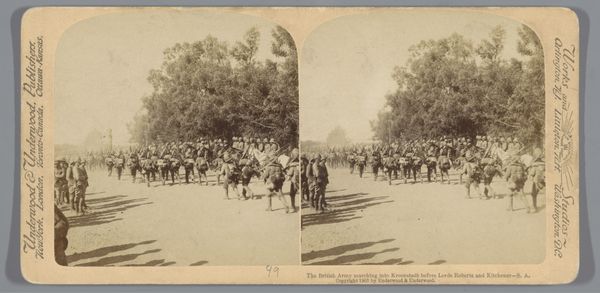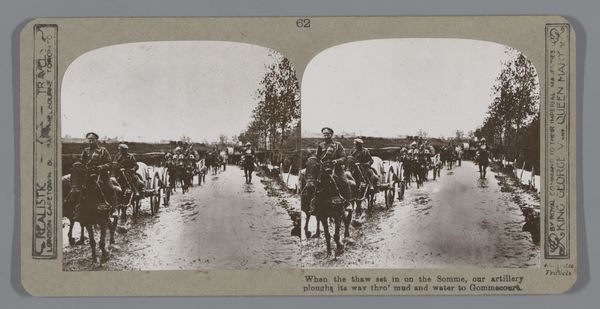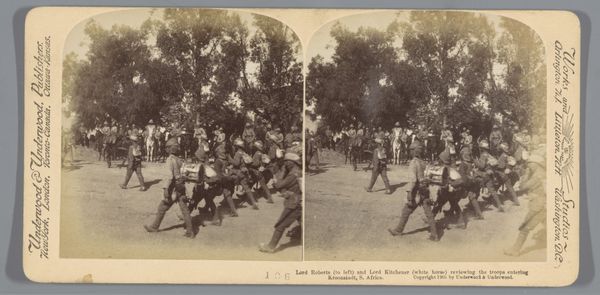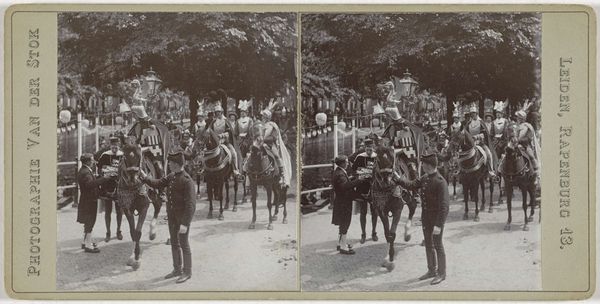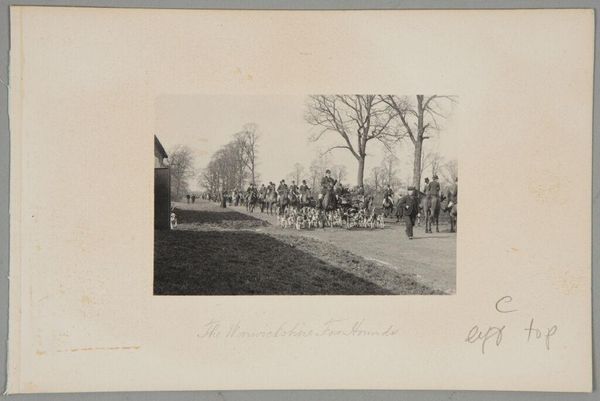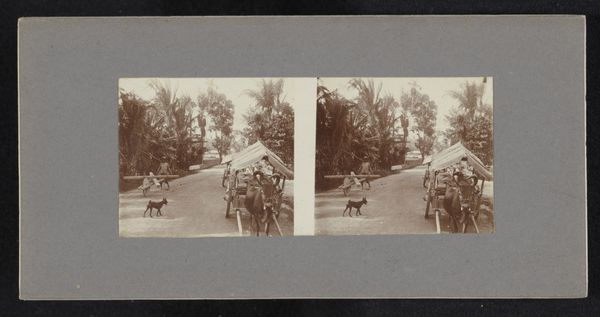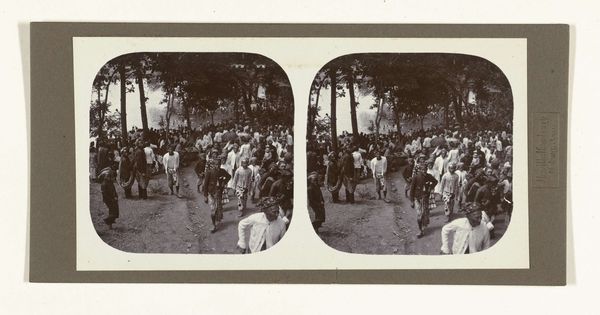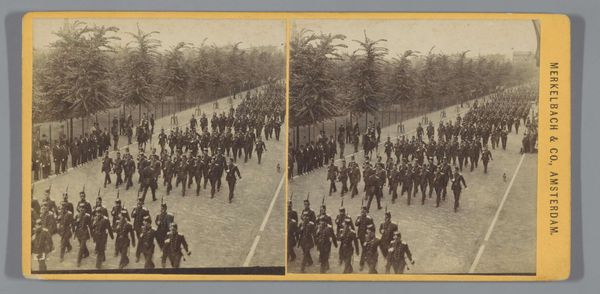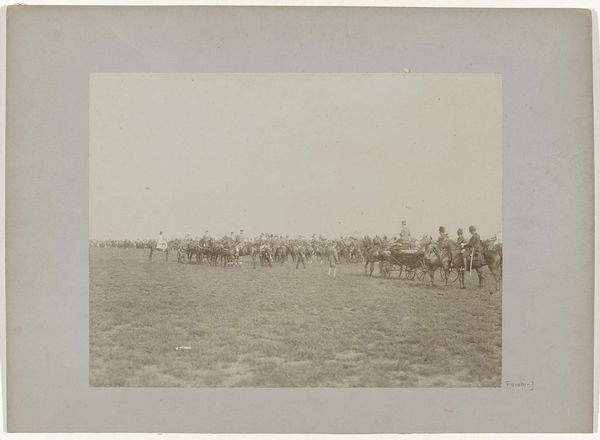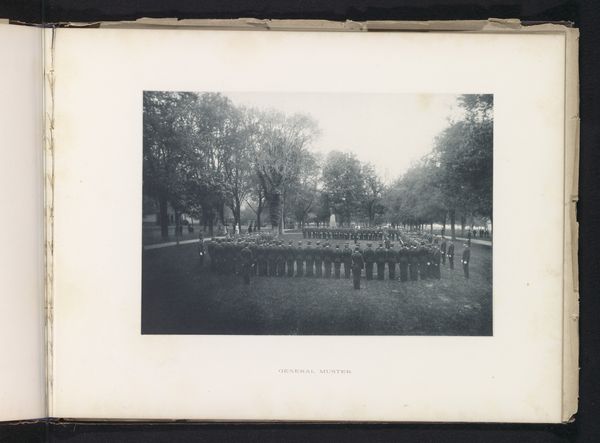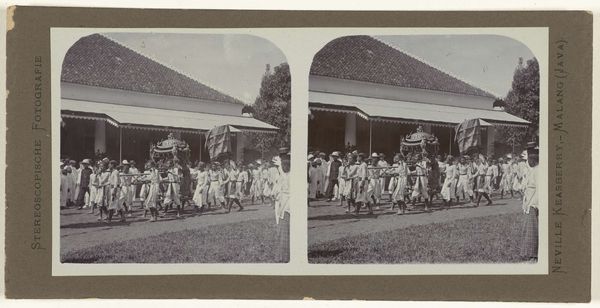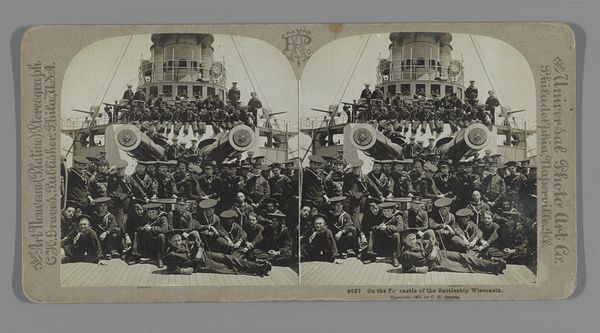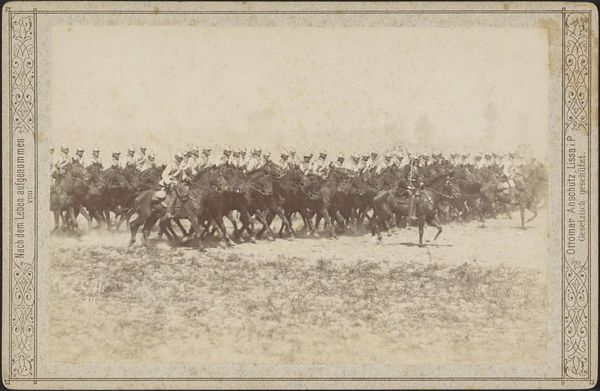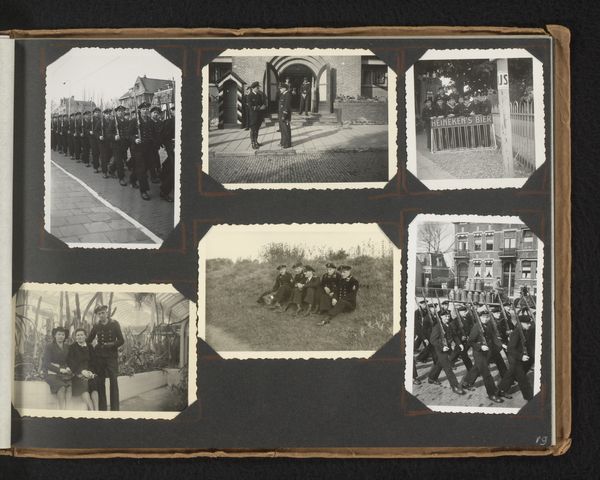
photography
#
street-photography
#
photography
Dimensions: height 76 mm, width 152 mm
Copyright: Rijks Museum: Open Domain
Curator: Looking at this photograph, titled "Pestbestrijding te Malang: transport van het Clayton apparaat", taken sometime between 1900 and 1935 by Neville Keasberry, what catches your eye first? Editor: The stark line of men immediately draws my attention. They seem weary, and their stooped posture and the ropes connecting them evoke a sense of forced labor or communal burden. There’s a somberness hanging over this scene, a heaviness that permeates the image. Curator: That's a powerful initial response. It's interesting to consider the image within the context of its creation. Keasberry, photographing in Malang, Java, captures not just a street scene, but also the dynamics of colonial control inherent in public health campaigns like pest control. This photograph, reproduced as a stereoscopic image, was very likely circulated back in Europe to demonstrate and consolidate an idea of Dutch progress and modern rule in the colony. The photograph thus functions as propaganda. Editor: Yes, you can certainly see the potential for propagandistic use here, creating an image of a well-ordered project for a European audience. But it doesn't erase that primal image of a collective of workers bound in some way. The apparatus in the background looks unwieldy. We also get that impression of heavy labour from this symbol. Do we know what kind of pest control this apparatus delivered, and does that act, or process itself, offer insight into the power dynamics at play here? Curator: Clayton machines were used for fumigation, employing sulfur dioxide to eliminate insects and vermin. Within the image, it is placed upon a tall raised wagon with men operating at the top. What might such elevation signify, literally looking down on those in front of the mechanism who must be tethered to its passage through the urban terrain? Editor: The height of the machine definitely speaks to control, elevating both the apparatus and those operating it. Then consider the symbolism of pest control itself – defining who and what is desirable and who/what isn’t. And sulfur! The smell, its biblical association with hell... It is a forceful purification symbol imposing not just physical change on this environment, but something almost like moral cleansing too. The local men tied to this alien monster as some imported European ideal of "cleanliness" progresses across the land. That feels like a potent encapsulation of the colonial dynamic. Curator: That interplay of symbols makes this photograph much more than just a record of pest control in Malang. It is an image of the relationship between those managing Java and the workers within its landscape. Thank you, it's given me new things to consider in its historical and visual record. Editor: A layered, unsettling, but ultimately telling image of that particular moment.
Comments
No comments
Be the first to comment and join the conversation on the ultimate creative platform.
